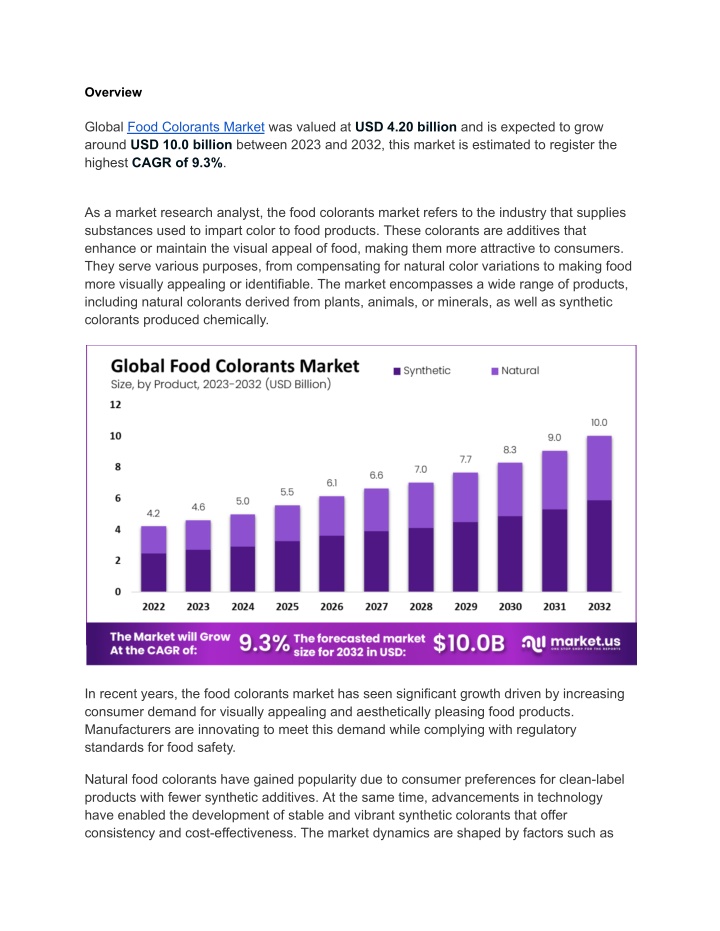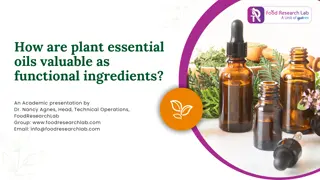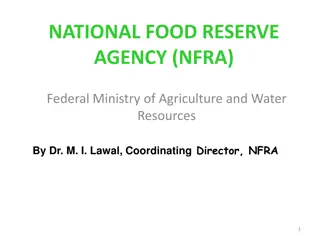
Health Benefits of Natural Food Colorants Market
Global Food Colorants Market was valued at USD 4.20 billion and is expected to grow around USD 10.0 billion between 2023 and 2032, this market is estimated to register the highest CAGR of 9.3%.n
Download Presentation

Please find below an Image/Link to download the presentation.
The content on the website is provided AS IS for your information and personal use only. It may not be sold, licensed, or shared on other websites without obtaining consent from the author. If you encounter any issues during the download, it is possible that the publisher has removed the file from their server.
You are allowed to download the files provided on this website for personal or commercial use, subject to the condition that they are used lawfully. All files are the property of their respective owners.
The content on the website is provided AS IS for your information and personal use only. It may not be sold, licensed, or shared on other websites without obtaining consent from the author.
E N D
Presentation Transcript
Overview Global Food Colorants Market was valued at USD 4.20 billion and is expected to grow around USD 10.0 billion between 2023 and 2032, this market is estimated to register the highest CAGR of 9.3%. As a market research analyst, the food colorants market refers to the industry that supplies substances used to impart color to food products. These colorants are additives that enhance or maintain the visual appeal of food, making them more attractive to consumers. They serve various purposes, from compensating for natural color variations to making food more visually appealing or identifiable. The market encompasses a wide range of products, including natural colorants derived from plants, animals, or minerals, as well as synthetic colorants produced chemically. In recent years, the food colorants market has seen significant growth driven by increasing consumer demand for visually appealing and aesthetically pleasing food products. Manufacturers are innovating to meet this demand while complying with regulatory standards for food safety. Natural food colorants have gained popularity due to consumer preferences for clean-label products with fewer synthetic additives. At the same time, advancements in technology have enabled the development of stable and vibrant synthetic colorants that offer consistency and cost-effectiveness. The market dynamics are shaped by factors such as
changing consumer preferences, regulatory requirements, and technological advancements, making it a dynamic and competitive industry. Key Market Segments Type Synthetic Natural Application Beverages Confectionery Processed Foods Bakery Products Dairy Products Pet Foods Download a sample report in MINUTES@https://market.us/report/food-colorants-market/request-sample/ In 2022, the food colorants market was segmented into beverages, dairy & frozen products, bakery, meat, poultry, seafood, confectionery, sauces, condiments, and others. Among these, the beverages sector held the largest share, establishing dominance in the market. Market Key Players DDW The Color House IFC Solutions Natural Food Color Neelikon Food Colours & Chemicals Accurate Color & Compounding Northwestern Extract Co KIK Danville Sensient Colors LLC WILD Flavors and Specialty Ingredients
Kolor Jet Chemical Pvt Food Ingredient Solutions LLC Other Key Players Driver: The increasing consumption of processed foods and beverages, driven by urbanization and changing lifestyles, is fueling demand for food colorants. Processed foods like snacks, soft drinks, and ready-to-eat meals rely heavily on food colorants to enhance their visual appeal. Restraint: Stringent regulations imposed by various national authorities are restraining the growth of the food coloring market. Concerns over the safety of synthetic colorants like Red 40 and Yellow 6 have led to regulatory scrutiny and consumer caution. Opportunity: Growing consumer awareness of health risks associated with synthetic ingredients has created a significant opportunity for natural food colorants derived from plants. Consumers are increasingly opting for products that use natural colors due to their perceived health benefits and lower risk of allergies. Challenge: Despite the demand for natural colors, the challenge lies in ensuring their stability and cost-effectiveness compared to synthetic alternatives. Manufacturers must innovate to meet regulatory standards while maintaining product efficacy and consumer appeal.






















